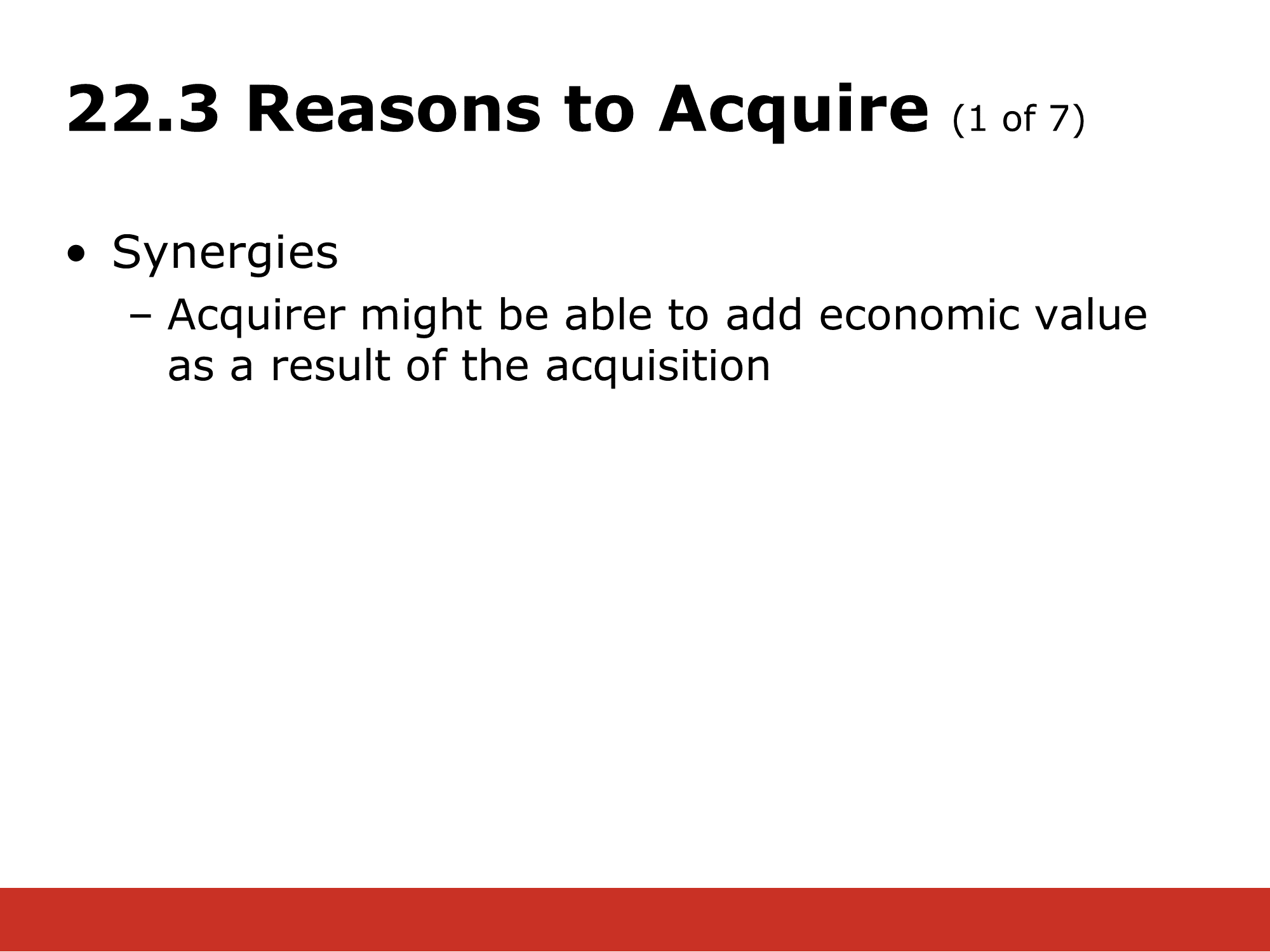✏️ Synergies
Definition of Synergies
In corporate finance, the value of a firm is based on the NPV of the cash flows the firm will generate. For example, suppose that the acquiring firm would generate cash flows whose NPV is $2B. Then the market cap of the acquirer will be $2B. (A=$2B.)
Similarly, suppose that the target firm would generate cash flows whose NPV is $1B. Then the market cap of the target will be $1B. (T=$1B.) Finally, suppose that if they merged, the combined firm would generate cash flows whose NPV is $4B. Then the market cap of the combined firm will be $4B. (C=$4B.)
If A=$2B and B=$1B, but, when they are combined, $C=$4B, then there must be some sort of benefit to be had by combining the Acquirer and the Target. When you add up their separate market caps you get only $2B + $1B = $3B. This is less than the market cap they would have if the merger took place ($4B).
Put simply, the merger provides synergies of $1B, lifting the combined market caps from $3B to $4B.
In general, we calculate the synergy of a merger in the same way. We add up the market caps of the individual companies and subtract that number from the value of the combined company:
Synergies vs Premium
As discussed above, Synergies, S, explain how a combined company is better than its component parts at producing the types of cash flows that generate a high NPV and market cap.
In comparison, the premium is just a way to communicate an offer made to the shareholders of a target company. Specifically, if a tender offer is accepted, the shares of the target firm will be replaced by shares in the acquiring firm according to an exchange ratio that is determined by the market prices and by the premium:
If the premium is zero, then the shares in the target will be exchanged for shares in the acquirer of equal value (based on market prices before the offer is announced). If the premium is positive, it means that shareholder in the target will receive additional shares. This “sweetens the deal” in hopes of convincing them to accept the offer.
The premium has no other function besides to convey the exchange ratio. As we saw in the ✏️ Merger Announcement Example in Excel example, the actual return to the shareholders of the target company is not expected to be equal to the so called “premium.”

- Let C = market cap/value of combined company
- Let A = market cap/value of the acquirer
- Let T = market cap/value of the target
✏️ In this class, synergies will be a number, S. What formula would you use to quantify the value of the synergies?
✔ Click here to view answer
There are two ways to measure the value of the combined company.
By definition,
the value of the combined company is C.
By addition, the value of the combined company is the sum of the two initial companies, plus any synergies:
the value of the combined company is C = A + T + S.
Ideally, these two measures of the value of the combined company should be the same, so
C = A + T + S
This allows us to quantify S:
S = C - (A+T)
The dollar value of synergies = the market cap of the combined company minus the market caps of the two component companies.
For example, the market cap of Salesforce is 179B (customer relationship management software). The market cap of Intuit is $122B (accounting and tax software). Together, we guessed that the market cap of the combined company would be .
Based on these numbers, if we combined the companies without any synergies, the value would be
A + T
If the actual market cap is $311.5B, that means that markets think that value has been added by combining the firms. How much value?
S = C - (A + T)
(S is just a number. It could be $0. Hopefully, it’s a positive number, but it could be a negative number as you add layers of management and make it harder for the board/C-Suite to focus on the “core competencies.“)